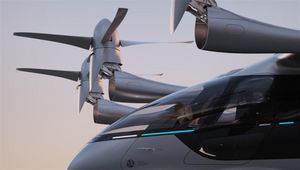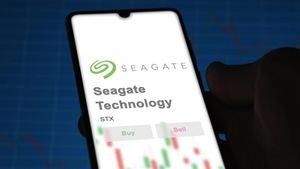In the world of modern metal fabrication and industrial manufacturing, cutting machines are indispensable core tools. From delicate electronic components to massive steel structures, they are used to shape and create. If you've delved into plasma cutting, you've likely encountered the terms "High-Frequency (HF)" and "Low-Frequency." These don't refer to cutting speed but rather to two distinct technological paths for a critical function within the machine: the arc starting method. Understanding their difference is like understanding two singers' vocal cords—one excels at high-pitched notes, the other at low-frequency resonance.
- The Core Difference: How They Ignite the Arc
To understand HF and LF, we must first grasp how a plasma cutter begins its work. The principle involves using an electrical current to "punch through" the air between the electrode and the nozzle inside the torch, creating a conductive channel of ionized gas—the "arc." This arc is then transferred to the workpiece to melt the metal and blow it away. The process of "punching through the air to create the initial spark" is called "arc starting" or "piloting."
High-frequency and low-frequency are two fundamentally different arc starting technologies.

A.High-Frequency Start (HF Start)
How it Works: As the name implies, it uses a dedicated high-frequency, high-voltage generator to produce a current with an extremely high frequency (thousands of Hertz) and extremely high voltage (tens of thousands of Volts). This powerful energy instantly and forcibly breaks down the air gap between the electrode and nozzle, creating the Pilot arc.
Analogy: It's like using a powerful Tesla coil to forcibly generate a lightning bolt between two electrodes—simple, brutal, and effective.
Key Feature: Because it doesn't require physical contact with the workpiece, it enables contactless starting. The torch can start the arc directly without touching the metal, which is ideal for delicate workpieces or materials with coatings or paint, preventing surface damage.

B.Low-Frequency Start (Often called Contact Start or Lift Arc)
How it Works: This method is more "gentle" and "direct." To start, the torch nozzle is first brought into physical contact with the workpiece (creating a short circuit). Then, the main power supply of the cutter, often through an oscillator or special circuit design, generates a lower-frequency current pulse. This pulse uses the short-circuit contact to ignite the arc. Once the arc is established, the torch immediately lifts to the normal cutting height.
Analogy: It's like striking a match. You need to rub the matchhead (nozzle) against the matchbox (workpiece) to create a spark before the flame ignites.
Key Feature: The starting energy is derived from the main power circuit itself, eliminating the need for a separate high-voltage HF generator.
- Pros and Cons: Different Tools for Different Jobs
Understanding their mechanics makes their pros, cons, and ideal applications clear.
High-Frequency (HF) Cutter:
Advantages:
Contactless Starting: Its greatest advantage. Protects workpiece surfaces and allows for more flexible operation.
Strong Arc Starting Ability: Reliable ignition even in challenging conditions like high altitude, thin air, or high humidity.
Disadvantages:
Severe Electromagnetic Interference (EMI): This is its most critical flaw. The generated high-frequency signal radiates outwards like a radio broadcast, severely interfering with nearby electronic equipment such as computers, CNC controllers, sensors, and wireless communications. This can cause system crashes or data errors.
Safety Concerns: The high voltage can potentially interfere with implanted medical devices like pacemakers.
Cost & Lifespan: The HF generator adds complexity, manufacturing cost, and is itself a component that can wear out.
Low-Frequency (LF) / Lift Arc Cutter:
Advantages:
Virtually No EMI: This is its core advantage. Without strong HF radiation, it is perfectly suited for integration into automated CNC cutting tables, robotic arms, and other precision manufacturing environments. It ensures the stability of the entire production line.
Higher Safety: Safer for operators and surrounding equipment.
Simpler & More Robust: The absence of an HF generator makes the system more reliable and cheaper to maintain.
Disadvantages:
Requires Contact Starting: The nozzle must touch the workpiece, making it unsuitable for pre-finished surfaces, delicate materials, or non-conductive materials.
Starting Performance can be Environment-Dependent: Its success rate might be slightly lower than HF in non-ideal conditions.
- How to Choose: The Right Tool for the Right Job
The choice between HF and LF depends entirely on your application:
Choose a High-Frequency Cutter if you are a hobbyist, work in a maintenance shop, or primarily do manual cutting. If you frequently cut metals of various shapes and surface conditions, are price-sensitive, and aren't worried about interfering with other electronics, an HF machine is an economical and effective choice.
Choose a Low-Frequency / Lift Arc Cutter if your machine will be integrated into an automated CNC system, production line, or robotic cell. If stability and noise immunity are the top priorities for your sensitive electronic control systems, then you must choose a low-frequency cutter. It sacrifices a bit of convenience for the peace and reliability of the entire production system.
About KeyGree: Global Manufacturing Powerhouse for Welding Excellence

KeyGree Group Co., Ltd. is a wholly foreign-owned enterprise invested by British in 2009:
· Established: Founded in 2009 (UK investment).
· Scale & Capacity: 80,000m²+ facility producing 700,000+ welding units annually.
· Quality Assurance: Certified to CCC, CE, ISO9001:2015.
· Full-Spectrum Expertise: Vertically integrated from R&D and component manufacturing (transformers, heat sinks, PCBs) to final assembly of machines, torches, and laser systems.
· Complete Solutions: Offering both industrial-grade and household welding equipment lines.
Contact us
Schedule an On-Site Demo (Client-Funded): Contact our engineering team to arrange verification testing of MIG-300DP's zero-porosity welds on your battery tray designs.
Tel: +86 18058395375
Email: info@keygree.com
Media Contact
Company Name: Keygree Group Co., Ltd.
Email: Send Email
Country: China
Website: https://www.keygree.com/






